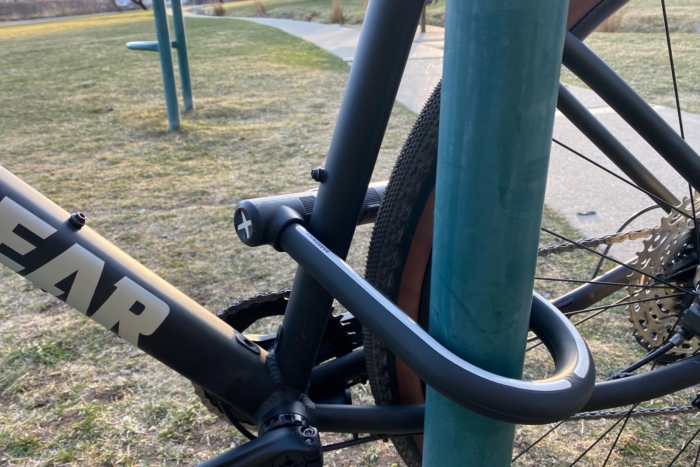
Fat bikes came on my radar in 2005, back when the big-tire bicycles were esoteric and custom-made. I rode one in the snow that winter and everyone gave me weird looks.
Today, the fat-bike genre is mainstream. There are dozens of companies that make gear in the category for riders looking to cruise and better “float” with bulbous tires in sand and snow.
Even children get fat bikes now. Framed Bike Company this fall released a literal family of fat bikes, for mom, dad, and kids.

Framed is a St Paul-based brand, and for its kid bike offering it adopted the geographically-appropriate name of Mini-Sota. Moms and dads are steered toward the Minnesota 2.0, which comes in men’s- and women’s-specific builds.
To test this fleet out I got a family of Framed bikes for my own family to demo. I put helmets on my 7- and 9-year-olds and gave them a Mini-Sota to ride.
An audible “whoo-hoo” came from my son, age 7, after three pedal strokes down the sidewalk. The 4-inch-wide tires hummed loudly on cement as he rolled away.
I rode the men’s Minnesota 2.0. We didn’t have snow, but instead we let some air out of the tires and set out on an urban session in search of obstacles only a fat bike could ride.

A local park provided a steep paved embankment and a set of stairs. I pedaled to the edge of the steps and floated down, a bumpy ride that was absorbed by the bike’s massive rubber.
My kids dabbled on curb-drops and small jumps, which are stunts they don’t try on their regular cruisers. The fat bikes inspire confidence over skinny-tire models, and they feel like “monster trucks,” my kids reported.

The following night I joined a friend for a mountain bike race. My Framed fatty, at 33 pounds, was exactly 10 pounds heavier than my bud’s mountain bike — this is a significant gap. But despite the weight it was surprisingly fast in the race.
Once the big wheels get rolling they are hard to stop. On singletrack dirt they spin and crush over logs, rocks, roots, and almost anything else without a blink. Suspension is not necessary for many trails with fat tires, which can be run at a low air pressure to absorb obstacles.

Hills are hard, however. The added weight of the bike let my buddy easily school me on any incline, where moving the fat-bike mass against gravity is a chore. The extra girth, however, felt unstoppable on big downhills, and the bike rode much faster than anticipated on flat sections of the trail.
Framed made a few key upgrades to its fat family this year. The 2015 line, which came to market this month, has better components, new tire models, a lighter frame, new pedals, and more.
All our tested bikes had aluminum-alloy frames with matte paint and simple graphics. Flair came from anodized color rims and matching components on the seatpost and stem.
Framed, like many fat-bike companies today, makes its line for riding in snow, sand, dirt, mud, and even in the city for cruising around. The fat category is more approachable than ever, and I encourage you to try a big-tire bike this year for a new type of fun.
Finally, Framed makes its bikes for all budgets. Fat bikes often cost $2,000 and up. But the kid’s model from Framed is $600, and the men’s and women’s bikes are $899 each, letting you experience the joy of fat riding more affordably than before.







